 For years, there have been rumors of Marvel and Dc shutting down the countless unauthorized prints, t-shirts and sketchbooks sold at conventions featuring licensed characters. While a few people have been shut down for doing something egregious, it’s mostly been a “look the other way” thing, as The Big Two don’t want to be […]
For years, there have been rumors of Marvel and Dc shutting down the countless unauthorized prints, t-shirts and sketchbooks sold at conventions featuring licensed characters. While a few people have been shut down for doing something egregious, it’s mostly been a “look the other way” thing, as The Big Two don’t want to be […]
Viewing: Blog Posts Tagged with: bars, Most Recent at Top [Help]
Results 1 - 25 of 49
Blog: PW -The Beat (Login to Add to MyJacketFlap)
JacketFlap tags: Art, licensing, The Freelance Life, big two, Add a tag
Blog: A Girl Who Creates - Holli Conger (Login to Add to MyJacketFlap)
JacketFlap tags: products, licensing, products for sale, Add a tag
Long overdue post but one I’ve wanted to do for a few years. Yes, years. The evolution of a product line.
This is the process of creating my “Peace Be With You.” product line for Carson Home Accents. Carson had told my agency that they were looking to expand their bereavement gift line so I concepted some ideas for a product line. What I wanted it to look like, the feel or it, materials, etc. This was just a sketch and a tiny little photoshop mock-up to get my ideas across in color. A lot of manufacturers really want a flushed out plan, color mock-ups, the whole nice yards, but since my agency had a good relationship with the client a rough sketch with ideas was sufficient to see if they had any interest in the product line.
So at this point, this entire line is just an idea in my head and a sketch on paper:
They passed on the idea, BUT my agency wanted me to do actual prototype mock-ups and send to them so they could really envision the line. So I hand sculpted two samples and sent them off to their office packed in prototype packaging as well:
Once they saw the actual 3D pieces, they loved it and wanted to pick them up as a collection for their bereavement line so now the major work comes in. They gave me this LONG list of categories and products (figurines, plaques, crosses, hanging ornaments, prayer stones, etc.) they wanted for grandmother, mother, father, general, pets, etc. I designed several figurines and prayer stones but only a certain number of products made it to the first (and really only) release of the line.
I scanned in lace and doilies my great grandmother made and used those as the main “art” in each piece. Then came all the sentiments. I don’t know how many dozen sentiments I came up with for this line, but after a while it got really depressing thinking of things to say that would be a comfort to someone who lost someone special to them. It was so trying that at the end of the day when I worked on so many sentiments a friends I saw that evening asked me what was wrong because I looked so sad. It was mentally and emotionally exhausting to be in that mindset all day.
A lot of licensing artist will just supply the flat color artwork and everything would then be created by the manufacturer to work on the 3D product. Since I have a design background, I was able to supply all the art needed for the factory. Renderings, b&w art for the molds along with the color layouts that the final product should match:
And here’s the final product line from Carson (It’s all available online through Amazon as well as some gift stores throughout the country.):
Blog: Cartoon Brew (Login to Add to MyJacketFlap)
JacketFlap tags: Cartoon Culture, Licensing, Fox, The Simpsons, Jeffrey Godsick, Chile, TV, Add a tag
Fox, which once considered selling "Simpsons"-branded beer "detrimental to children," has changed its tune.
Add a CommentBlog: warrior princess dream (Login to Add to MyJacketFlap)
JacketFlap tags: design, art, watercolor, bird, licensing, easter, lamb, easter egg, sara burrier, sara b illustration, 2015, Add a tag
My very first intentional collection, from start to finish. A sweet Easter lamb surrounded by tulips, joyful bold colors, and a hint of earthy textures.
Blog: OUPblog (Login to Add to MyJacketFlap)
JacketFlap tags: OA, open access week, Rhodri Jackson, STM model licences, Open Access, Education, Journals, Creative Commons, licensing, Media, *Featured, Life at Oxford, Add a tag
Open access (OA) publishing stands at something of a crossroads. OA is now part of the mainstream. But with increasing success and increasing volume come increasing complexity, scrutiny, and demand. There are many facets of OA which will prove to be significant challenges for publishers over the next few years. Here I’m going to focus on one — licensing — and discuss how the arguments seen over licensing in recent months shine a light on the difference between OA as a movement, and OA as a reality.
Today’s authors face a number of conflicting pressures. Publish in a high impact journal. Publish in a journal with the correct OA options as mandated by your funder. Publish in a journal with the correct OA options as mandated by your institution. Publish your article in a way which complies with government requirements on research excellence. They are then met by a wide array of options, and it’s no wonder we at OUP sometimes receive queries from authors confused as to which OA option they should choose.
One of the most interesting aspects of the various surveys Taylor & Francis (T&F) have conducted on open access over the past year or two has been the divergence between what authors say they want, and what their funders/governments mandate. The T&F findings imply that, whilst there is generally a shared consensus as to what is meant by accessible, there are divergent positions and preferences between funders and researchers as to what constitutes reasonable reuse. T&F’s surveys always reveal the most restrictive licences in the Creative Commons (CC) suite such as Creative Commons Attribution Non-Commercial No-Derivs (CC BY-NC-ND) to be the most popular, with the liberal Creative Commons Attribution (CC BY) licence coming in last. This neither squares with the mandates of funders which are usually, but not always, pro CC BY, or author behaviour at OUP, where CC BY-NC-ND usually comes in a resounding third behind CC BY and CC BY-NC where it’s available. It’s not a dramatic logical step to think that proliferation may lead to confusion, but given the conflicting evidence and demand, and potential for change, it’s logical for publishers to offer myriad options. At the same time elsewhere in the OA space we have a recent example of pressure to remove choice.

In July 2014, the International Association of Science, Technical and Medical Publishers (STM) released their ‘model licences’ for open access. These were at their core a series of alternatives for, and extensions to the terms of the established CC licences. STM’s new addition did not go down well in OA circles, as a ‘Global Coalition’ subsequently called for their withdrawal. One of the interesting elements of the Coalition’s call was that, in amongst some very valid points about interoperability, etc. it fell back on the kind of language more commonly associated with a sermon to make the STM actions seem incompatible with some fundamental precepts about the practice of science: “let us work together in a world where the whole sum of human knowledge… is accessible, usable, reusable, and interoperable.” At root, it could be interpreted that the Coalition was using positive terminology to frame an essentially negative action – barring a new entry to the market. Personally, I don’t have a strong opinion on the new STM licences. We don’t have any plans to adapt them at OUP (we use CC). But it was odd and striking that rather than letting a competitor to the CC status quo exist and in all likelihood fail, some serious OA players felt the need to call for that competitor’s withdrawal.
This illustrates one of the central challenges of the dichotomy of OA. On one hand you have OA as a political movement seeking to replace commercial interests with self-organized and self-governed communities of interest – a bottom-up aspiration for the common good, often suggested to be applied in quite restricted ways, usually adhering to the Berlin, Budapest, and Bethesda declarations. On the other you have OA as a top-down pragmatic means to an end, aiming to improve the flow of research and by extension, economic performance. The OA pragmatist might suggest that it’s fine for an author to be given the choice of liberal or less liberal OA licences, as long as they meet the basic criteria of being free to read and easy to re-use. The OA dogmatist might only be satisfied with the most liberal licence, and with OA along the terms they’ve come to believe is the correct interpretation of their core precepts. The danger of this approach is that there is a ‘right’ and a ‘wrong’ and, as can be seen from the language of the Global Coalition in responding to the STM licences, that can very easily translate into; “If you’re not with us, you’re against us.”
Against this backdrop, publishers find themselves in a thorny position. Do you (a) respect author choice, but possibly at some expense of simplicity, or do you (b) offer fewer options, but potentially leave members of the scholarly community feeling dissatisfied or disenfranchised by your standard option?
Oxford University Press at the moment chooses option (a), as we feel this is the more inclusive way to proceed. To me at least it feels right to give your customers choice. But there is an argument for streamlining processes, avoiding confusion, and giving users consistent knowledge of what to expect. Nature Publishing Group (NPG), for example, recently announced that as part of their move to full OA for Nature Communications they would be making CC BY their default, and only allowing other options on request. This is notable in as much as it’s a very strong steer in a particular direction, while not ruling out everything else. NPG has done more than most to examine the choice issue – changing the order of their licences to see what authors select, sometimes varying charges, etc. Empirical evidence such as this is essential for a viable and credible resolution to the future of OA licensing. Perhaps the Global Coalition should have given a more considered and less emotional response to the STM licences. Was repudiation necessary in a broad OA community which should be able to recognise and accept different variants of OA? It would be a shame if all the positive impacts of open access for the consumer come hand in hand with a diminution of scholarly freedom for the producer.
The opinions and other information contained in this blog post and comments do not necessarily reflect the opinions or positions of Oxford University Press.
The post Questions surrounding open access licensing appeared first on OUPblog.
Blog: Whateverings (Login to Add to MyJacketFlap)
JacketFlap tags: owl images, owl pattern, General Illustration, Samples, pattern, licensing, owls, paula j. becker, paula becker, Cartoons & Comics, Add a tag
There may be more. Fun with patterns & images.
Blog: I Piccolini (Login to Add to MyJacketFlap)
JacketFlap tags: licensing, gaia bordicchia, picture book, cute, Illustrations, Add a tag
I always fear changes, big and small, but I also hate being stuck. When something doesn't work for me, when I feel I'm out of place or held back, I become restless… This should be the last blog update for a while. I'm struggling to give my portfolio an update and a new look. Me and web design are not good friends and it's a frustrating process.
I leave with good news! I'm now represented in the U.S. by the super lovely Teresa Kietlinski at Prospect Agency. This is a big change. I'm happy and very lucky. It's a new journey ahead!
Blog: (Login to Add to MyJacketFlap)
JacketFlap tags: licensing, Yen Press, Manga Articles, Add a tag
As a follow-up to our recent round-up “What Manga Publishers Can Actually License in the US,” I reached out to Abigail Blackman, freelancer at Yen Press, for more insight after Lys pointed out we didn’t cover YP’s guidelines. Hit the jump for her thoughts!
Abigail notes that while there are no hard and fast rules when it comes to manga licensing…
Regarding licensing, there are no firm rules (for anyone, as far as I know) about who can license from whom. Like any business deal, licensing is a matter of negotiation between the two companies. In the cases of Viz and Kodansha, which are managed by a Japanese publisher, they may have restrictions built into their business about where they can get material, but even Viz has licensed Japanese series from companies other than their Japanese owners (Fullmetal Alchemist being the biggest one I can think of)…
…companies tend to go with who they know.
While there’s generally nothing that would prevent a US publisher from pursuing a particular series, you will often see one US company working more closely with a certain few Japanese companies simply because they’ve build stronger business relationships over the years. Even then, it’s no guarantee who will win out when it comes to a series that multiple companies want. (There’s a lot that goes into the negotiations) It’s also true that companies with direct connections, like Shueisha/Shogakukan and Viz or Kodansha (JP) and Kodansha USA, may have priority agreements that affect which series are ultimately available to other US publishers.
Don’t lose hope!
Yen does try to ensure our list has variety with titles like Bunny Drop, A Bride’s Story, light novels, etc., so I wouldn’t say any genre is out of the question.
But, as always, keep your expectations realistic.
But the US manga market is very small compared to Japan and elsewhere, so every publisher has to make careful decisions about which books to publish. A lot of manga readers stop reading comics after college, so it’s harder to make jousei and seinen titles or more “literary” titles successful, which is why you don’t see as many from most publishers. That doesn’t mean niche titles aren’t considered, but their appeal to the US readership has to be carefully weighed.
And there you go! Remember, don’t be afraid to reach out to companies for series you’d love to see published; as long as you do your research, the worst they can say is “no,” and you may learn a little bit more about the ins-and-outs of manga licensing in the meantime.
Blog: (Login to Add to MyJacketFlap)
JacketFlap tags: Kodansha, DMP, Manga Articles, license rescues, viz seven seas, Manga, vertical, licensing, Add a tag
Ever had an unlicensed series that never seems to make it into the latest licensing announcements? Are you dying to see that obscure cat manga translated into English? Our licensing request round-up explores some of things to consider when requesting manga licenses from your favorite US publishers.
So you’ve read a killer blurb about an unlicensed manga that you’d love to see Stateside — what next? You’ll want a to consider a handful of things:
- How long the series is
- How old the series is
- Whether the series has been previously released, and, most importantly,
- The series’ original Japanese publisher.
First up: the length. Both Kodansha and Vertical have mentioned that the longer a series goes the more of a stretch it is to license. Will fans stay interested in a 20+ volumes long series that will take years and years to release? Volumes 1-3 may be a hit, but what about everything in between? A hugely popular franchise or anime tie in may make the case more compelling for licensing a longer series, but other longer series are riskier than their short and sweet counterparts.
Hand in hand with length is to consider how old a series is. Personally, I’m a big fan of older shoujo, but one has to consider whether this would “hit it off” with newer (and maybe younger) fans who may be used to new art styles, techniques, or story tropes. Then there is also the issue of file quality for other series: older series may not have digital files to work with and as Vertical’s Ed Chavez points out on the Vertical Tumblr: “…good files might be hard to find, turning a simple translation and lettering job into a bit of an archaeological/anthropological project.” Unfortunately older series are a bit harder to sell.
Next you’ll want to do your research: Has your requested series been published before? If it’s complete and easily acquirable, great! Otherwise if your series is OOP or in licensing/release limbo things are tricky. “License rescues” are particularly hard sells. I talked to Yoko Tanigaki of Digital Manga Publishing’s (DMP) sales and distribution manager regarding rescues and her response noted that rescues are “extremely difficult,” that “popularity” is a huge factor, and that there would need to be “serious reasons” to consider a rescue. Not to say that hasn’t been done, but the reasoning would have to be fairly compelling, I would imagine.
But okay! So your series is the perfect length, not too old, and not a license rescue (or if it is, it’s a really compelling case). Now you bombard every manga publisher with your license request, right? No, you shouldn’t! A more targeted approach is better and shows you’ve done a bit of research; not every publisher can license manga from every Japanese publisher! Some US manga publishers are actually subsidiaries/are owned by a Japanese publisher; Kodansha USA is the US branch of Japanese publisher Kodansha, while Viz is owned by Shogakukan and Shueisha. Therefore the most efficient course of action is to find out the original magazine your to-be-licensed series was published in and locate the publisher from there. Once you know that information you can tailor your license request to a specific publisher.
Let’s take the fan-favorite (and fairly obvious) but still unlicensed manga Princess Jellyfish. While this doesn’t make the length cut at thirteen volumes and it certainly a hard josei sell, as a general example who would you “pitch” this license to? A quick search brings up that the series was published in Kiss, a Japanese magazine published by Kodansha. Therefore Kodansha USA would be my go-to publisher for a license request, (though unfortunately Princess Jellyfish seems unlikely at this point.) Even if you have the right publishers lined up, one also should consider the type of manga a US publisher tends to license. Both Seven Seas and Kodansha have noted a preference for non-explicit/series that don’t need to be shrinkwrapped in store, so series that may require that may be best pitched elsewhere, if possible.
To summarize, below is a handy (but no where near exhaustive) list of some US manga publishers available or unavailable Japanese publishers, relevant links, and licensing preferences.
Viz Media
CAN License From: Shogakukan & Shueisha
CAN License From: Kodansha JP ONLY
Not Preferred: long series (15+ volumes), titles on obscure subjects, series older than early 2000s, graphic violence/sexuality, no light novels
CANNOT License From: Shueisha, Shogakukan, Akita Shoten, Gentosha
Not preferred: long series (10+ volumes), series older than 2002, license rescues
Note: Has open licensing surveys/requests regularly.
CAN License From: ASCII Media Works, Ichijinsha, Kadokawa/Kadokawa Shoten, Media Factory, Shonen Gahosha
CANNOT License From: Hakusensha, Kodansha, Shogakukan, Shueisha, Square Enix, SoftBank, Creative/Flex Comix
CAN License From: Anywhere, within obvious limits (Kodansha, Shogakukan, Shueisha would go to their respective companies first)
Not preferred: license rescues
Keep in mind that even with a the most well-researched license request, a licensing decision lies with the publisher and the related parties. Some fan favorites still remain unlicensed, but it certainly doesn’t hurt to politely voice your wishes to the publishers. They love manga just as much as you do.
So, are there any series you would love to see licensed or “rescued?” Let us know in the comments!
Blog: I Piccolini (Login to Add to MyJacketFlap)
JacketFlap tags: colouring book, gaia bordicchia, la marelle, children, Illustration, autumn, animals, licensing, notebook, stationery, Add a tag
Blog: A Girl Who Creates - Holli Conger (Login to Add to MyJacketFlap)
JacketFlap tags: products, lettering, licensing, junk-a-doodles, products for sale, Add a tag
Just in time for teacher gift season I have some products available in Dollar Stores around the country and each one is just a $1!!

Note pad, notepaper booklets & note cards. Each sold separately.
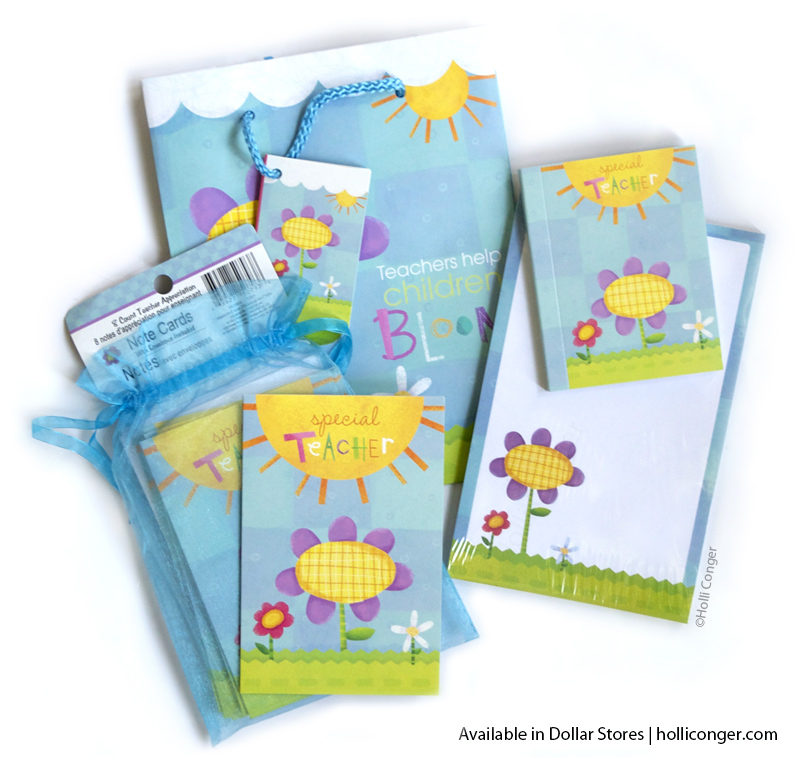
Note pad, notepaper booklets, note cards & gift bag. Each sold separately.
Add a CommentBlog: A Girl Who Creates - Holli Conger (Login to Add to MyJacketFlap)
JacketFlap tags: products, licensing, products for sale, Add a tag
I ran by our local Target this morning and they were busy stocking their new boy bedroom decor and look what I spotted on the P.O.P:
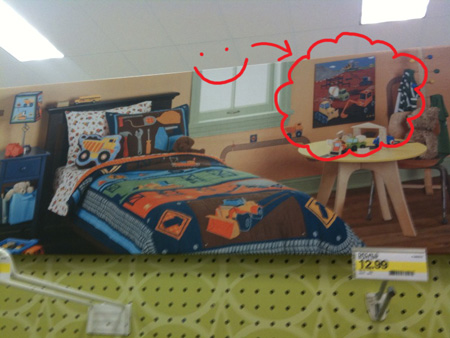
I did the stretched canvas art for them that matched their Circo Build It collection. They were busy stocking it all so I didn’t want to stand there watching so I’ll have to go back and take a look at the finished product in a few days. It’s a 21″x21″ canvas and I think it’s around $30.

I also did a matching growth chart that will be available on Target.com:

So if you have a little builder at your house, these products would be perfect for him ![]()
Blog: A Girl Who Creates - Holli Conger (Login to Add to MyJacketFlap)
JacketFlap tags: products for sale, products, lettering, licensing, latest work, Add a tag
I recently licensed my comic book words series to the great folks at Oopsy Daisy. They are available as large 24″x18″ wrapped canvases and “POW!” is available as a night light too. Come on, you know you want to get them for your little super hero!
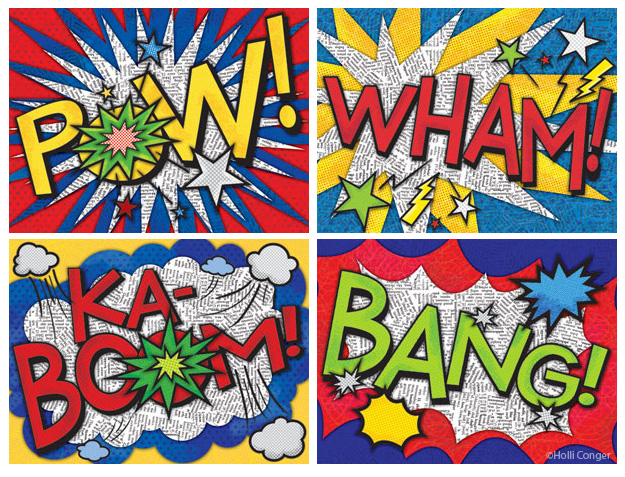
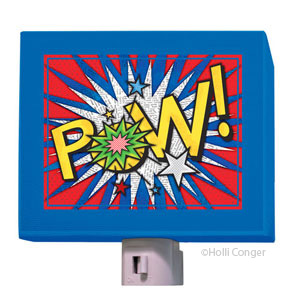
Psst…won’t this art look cute on other products? They’re available for licensing. Just email me ![]()
Blog: Blog of the Cold Snap Illustrator (Login to Add to MyJacketFlap)
JacketFlap tags: greeting cards, licensing, Add a tag
While we're on the subject of dinosaurs (and the piece from last post is still a work-in-progress) I wanted to show off my new dino lady birthday card design. Lots of card options for all the lovely ladies in your life are available at my online greeting card store, so check them out! This piece is also available for licensing on a variety of products, please contact me if you're interested!
Oh - and have a lovely weekend! =)
DISCLAIMER: If you follow the link to visit my online store and purchase items associated with my artwork, I will earn a commission.
Blog: Lesley Breen Withrow (Login to Add to MyJacketFlap)
JacketFlap tags: Stationary Show, children's books, Greeting Cards, licensing, notecards, novelty books, snails, Surtex, Add a tag
Blog: Leslie Ann Clark's Skye Blue Blog (Login to Add to MyJacketFlap)
JacketFlap tags: artist, art, licensing, new art, inspired, Add a tag
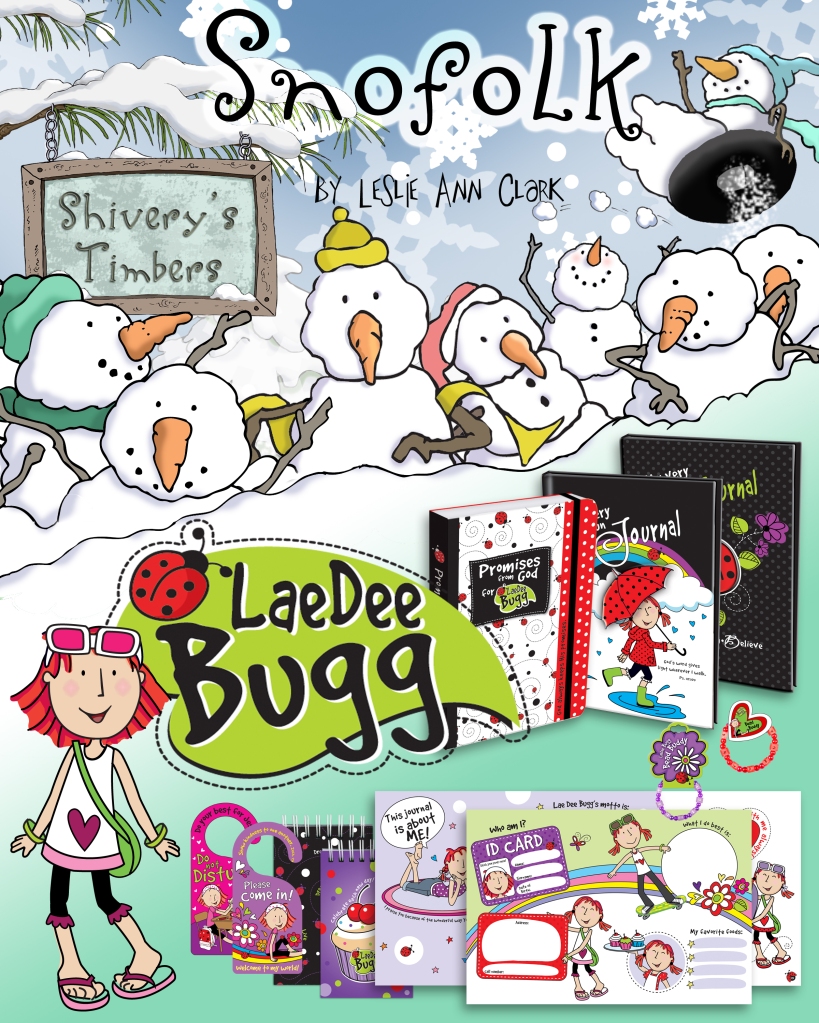
Being an artist is surely not a job for the faint of heart. At least if you are trying to earn a living at it. I am a student to many of my successful artist friends. I have seen the common thread of those who are doing well, is this “KNOWING” that no matter what, you will continue to create. There is also the need for a “skin like a rhino” and the drive to keep getting out the pencil and keep sketching and creating, even when you hear words like, the economy is down, business is slow, yada yada yadaa bla!
Call me what you will, I was born to make art, draw cartoons and color pictures each day. It is what makes me get up in the morning and what I often think about when going to bed. I have even gotten ideas in the night when I am happily dreaming away! Oh the paintings I have done in my sleep!
I finished this last panel for the Licensing show in Las Vegas yesterday. What a load lifted. I thought I finished the art late Sunday night, but upon sleeping on it, I woke up knowing it needed more tweaking. I LOVE how the bright turquoise came out. Pro Copy really got this one right!
Off to work on a snow man story!
Blog: Leslie Ann Clark's Skye Blue Blog (Login to Add to MyJacketFlap)
JacketFlap tags: color printing, art, color, licensing, Work is Play....?, Add a tag
Oh boy!! My hat is off to Pro Copy in Longmont! Another color printing job well done!
Filed under: Work is Play....?
Blog: Leslie Ann Clark's Skye Blue Blog (Login to Add to MyJacketFlap)
JacketFlap tags: licensing, new website, Work is Play....?, Inspiring Websites, fun, Add a tag
Another panel down for the Licensing Show in June. ONE left!! …. I need to get cracking on it. Off to the printer tomorrow! …also finished up my website… that has taken me only about 5 years! ha! http://home.earthlink.net/~lesann
Filed under: Inspiring Websites, Work is Play....?
Blog: erin eitter kono (Login to Add to MyJacketFlap)
JacketFlap tags: illustration, zazzle, licensing, kids shoes, art reception, Add a tag
Blog: A Girl Who Creates - Holli Conger (Login to Add to MyJacketFlap)
JacketFlap tags: licensing, Add a tag
Blog: the dust of everyday life (Login to Add to MyJacketFlap)
JacketFlap tags: Watercolor, bunnies, licensing, Wendy Edelson, Add a tag
 |
| Two Bunnies |
 | ||
| 1+2+3+4+5+6+7+8+9+10 bunnies and Momma Bunny |
Spring will come!
Blog: The Official SCBWI 10th Annual New York Conference Blog (Login to Add to MyJacketFlap)
JacketFlap tags: licensing, illustrators intensive, NY11, penny sikalis, suzanne cruise, Add a tag
 Only a handful of the attending illustrators have had their artwork licensed, but 99% would like to know how to make that happen. You might remember Suzanne Cruise from when she spoke on licensing a few years ago. But Penny Sikalis is a new-to-SCBWI presenter from Surtex with a really fabulous offer for all the illustrators at today's panel. FREE BADGE to the Gift Fair happening this weekend at Javits Center,—thanks, Penny!
Only a handful of the attending illustrators have had their artwork licensed, but 99% would like to know how to make that happen. You might remember Suzanne Cruise from when she spoke on licensing a few years ago. But Penny Sikalis is a new-to-SCBWI presenter from Surtex with a really fabulous offer for all the illustrators at today's panel. FREE BADGE to the Gift Fair happening this weekend at Javits Center,—thanks, Penny!
First, Penny went over the absolute basics of art licensing:
- Art Licensing = Legal permission given to a manufacturer to produce and sell products using your art for a fee
- Artist = Licensor
- Manufacturer = Licensee
- Take classes
- Visit trade shows
- Look at types of products and companies that sell these products and start a list
 |
| from http://cococakecupcakes.blogspot.com/2009/03/hungry-caterpillar-cupcake-party-train.html |
If you can draw a character, you can license your art.
Major Categories of products that need art (subcategories not listed) apparel, craft/hobby, bedding, gift, home decor, publishing, stationery, tabletop (dishes, etc.), textiles, bath.
Your goal as an artist is to license the same piece of art to different manufacturers of different types of products so that you can get paid multiple times for that one piece. Something you can't do with one piece of bubble gum, one kitten*, or one copy of nuclear weapons blueprints.
Seventy-five percent of the Surtex show (SURface Trade EXpo) is devoted to art licensing.
Links: http://www.artlicensinginfo.com, LinkedIn art licensing group, and surtex.com's monthly e-newsletter called On the Surface for more tips on getting started in art licensing.
*You might be able to license a kitten, I really don't know.
Blog: Creative Whimsies (Login to Add to MyJacketFlap)
JacketFlap tags: children's book, pattern, licensing, Licensed Art, cat, mummy, iced tea, hot tea, Illustration, boy, Add a tag
Blog: Blog of the Cold Snap Illustrator (Login to Add to MyJacketFlap)
JacketFlap tags: illustration friday, licensing, Add a tag
This week's Illustration Friday topic is "fearless". Sick of being plagued by itchy little fleas, Marty the sheepdog fearlessly hopped in the bath.
Blog: A Girl who Creates (Login to Add to MyJacketFlap)
JacketFlap tags: licensing, junk-a-doodles, Add a tag
My new year started off great when I found my work up on Oopsy Daisy's site - even in cute styled shots (see the mermaid on the beach?). I licensed a few Junk A Doodles® with them and can't wait to get my hands on the actual canvases. They have been on my client wish list for quite a while and I'm glad my persistence and follow-up paid off. So excited about this new relationship!
Tomorrow I'll show you a detailed look at the Valentine's placemats I did for them - super cute! I blogged a sneaky peek here.
View Next 23 Posts



















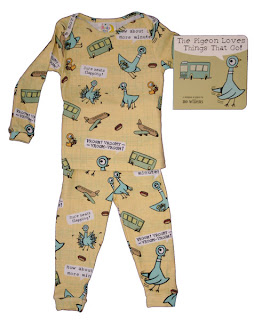
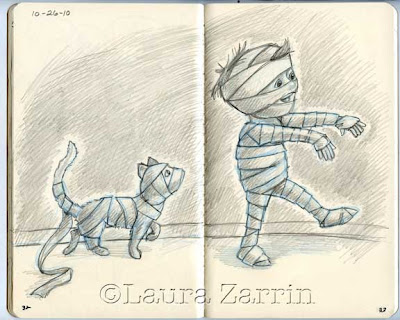



Wow, this is indeed a sticky situation.
I have to admit, I would love to see LESS selling of prints for established characters and more original art, but that’s a personal quibble. The fact is many artists do not own the work they do for the corporate level characters, thus selling the prints (sometimes of their own work!) is the only way to make something happen from it (beyond the work-for-hire money they already get).
But what is a guy like Greg Horn, an exceptional colorists and artist himself, supposed to do? It is HIS work, and his colors, and his art. His files are often 100% digital, thus they only exist in a form off a printer. I like Greg and I want him to find his fans that seek out his work. However, that invites the slippery slope of the less established artists — especially the ones who never actually worked on the properties they sell.
I dunno… it’s a tough place to be in because it’s an actual legal action and also a moral & ethical action. Yet… there is a side of compassion for the community that invented the wheel we all need just to make this wagon roll along. Go figure.
Copyright, as it currently exists, doesn’t work. Corporations contradict themselves, arguing for longer terms on the one hand and then ignoring copyright violations on the other. Arbitrarily going after some and not others just creates confusion as to what is allowed and what isn’t.
Only corporations can solve this, but they prefer to let the situation stand. Offering some kind of license online for a fee for items costing less than a certain amount or print runs of less than a certain amount would benefit the corporations and make the work legal. Those licensees with exclusive rights would no doubt complain about the low cost competition, but they’re complaining now and being ignored.
How difficult was it to get a license from Lucasfilm pre-Disney?
There are two possible solutions:
The Boom! Studios model, and the authenticated model.
Boom’s convention booth includes a section for artists.
Boom will sell a sketch cover variant, usually for about $10, which includes a sketch from the artist/cartoonist working on that title.
The receipts are split between Boom and the artists.
This allows an artist to attend the convention without needing to buy a table.
Boom gets an extra draw (ha!) to their booth.
The second option is licensing/certifying artists.
An artist can apply for certification/authentication.
For a print, a quick authorization service can approve artwork.
The artist can then print copies as they like. Perhaps there is a limited edition with CoA on heavy stock, or framed. Maybe it’s a simple laserprint. Or a t-shirt. Or button.
Disney/Marvel could even market the images directly, like they did with J. Scott Campbell’s “Princess and Villain” series, just as they commission artwork from established artists.
—
Question… these gallery shows, where people reinterpret popculture icons as fancy prints… are those licensed?
Torsten asks: “Question… these gallery shows, where people reinterpret popculture icons as fancy prints… are those licensed?”
Torsten, that’s a good question. I had recently looked into doing just that; doing new original work with images of classic 50’s movie stars. You see them everywhere; how tough can it be?
Answer: The rights to their images belong to their estate. You can’t (really CAN’T) use their image without permission.
I am an artist. I work for a company creating art using Licensed characters. I do not make or sell prints of my interpretations of those characters.
We are given a Style guide containing approved art of the characters that we can use. We can interpret the art to an extent. Any art we create has to be submitted to the licensor for approval before we can make any product using that art.
I know from experience that creating your own interpretation a licensors characters and asking them to approve them seldom ever works out in your favor.
The licensor will always ask you to match the style guide.,
Plus a a licensee you have to guarantee a certain amount of sales each year as a part of your contract. Like I said I’m an artist, not one of the number crunchers so I don’t know the legal/$$ specifics of being a licensee, but I’m sure a illustrator attending a Con selling prints could never sell enough prints to make it worth while for a Licensor to “approve” the artist to create original versions of their characters.
And as an artist who works on licensed properties I don’t believe any of the con artists would like to go through the multiple steps of getting art approved, including multiple changes to the art that can kill the originality of a piece of art.
Honestly I don’t believe that the frustration of getting and keeping a license would be worth it to a con artist,The time and money that the licensor would spend trying to keep up with the multitude of con artists would cost more money that it would make.
All that being said, I like to see artists interpretations of my favorite characters.
Would I want those same artists to be making money off of characters that I own, therefore taking money out of my pocket? I’d have to say no.
I think if an artist does an original drawing and sell it. That’s fine.
Making multiple prints and selling them. That’s not ok.
I’ve found that legit artists never sell prints or other unlicensed merchandise but will happily sell their one-of-a-kind originals or do a one-of- a-kind commission on the spot. It’s a distinction with a difference: a print is engaging in the unlicensed manufacture of a product while a commission is just a moment in time, like autographing a book. I know I’m biased because I work for licensors (and have, without a break, for 12 years) so I’m basically “The Man,” but selling unlicensed product is disrespectful to the countless hours of hard work that goes into the licensed ones by dozens of people to deliver something the property owner can be proud of and lives up to their brand promise.
I think part of it is justified in people’s minds by this sense that the corporations don’t need that money anyway, or aren’t taking their character steward reposnsibility seriously (which I can say is NOT true), but just imagine this same thing happening with a smaller property. Would we be OK with ten different artists selling hundreds of prints of the characters from Chew or Invader Zim without compensating the creators? Or even Saga?
As I understand it (and I am not a lawyer) under US copyright, you can make and sell original one-of-a-kind works of art, like a sketch or painting. But, you cannot reproduce that art and sell posters of it using mechanical means. Yeah, it sucks if you’re a digital artist, but that’s why old laws should be updated.
From what I’ve seen, I doubt you could convince a judge that most fan art and cosplay kits fall under fair use as a commentary or criticism. Possibly parody, but even it’d have to painfully obvious and you still might loose.
Now, copyright and trademarks are different. Companies have a legal obligation to protect their trademarks from infringement or risk losing them. Trademarks are the words and images associated with a brand, like the Superman “S” or the word Marvel in their special logo font.
Artists selling prints of their artwork depicting trademarked characters I don’t see as being much of a problem as it’s not taking money out of the pockets of the companies that own them. I don’t see DC or Marvel pumping out prints outside of what us consumers already buy, which is the comics themselves or variants.
I am curious about artists creating artwork depicting characters in less than favourable scenarios and turning that into a profitable side job. You’d think these companies would focus on branding and protecting their properties, particularly when if it applies to artists they already have in their employ drawing said characters.
Just a side thought with lots of ignorance attached as I have no idea how these things work.